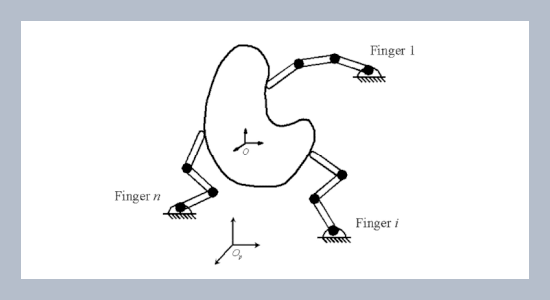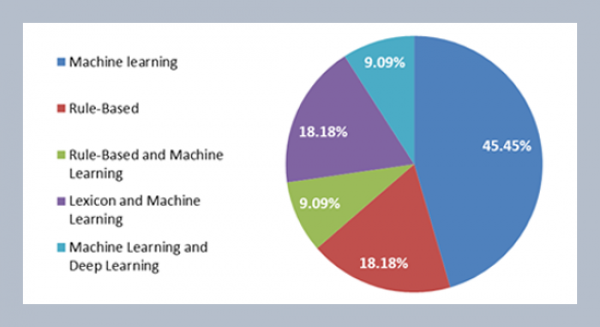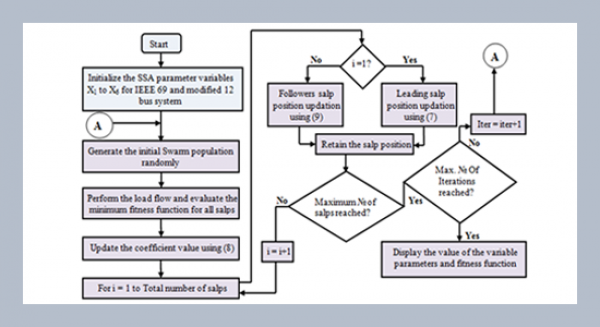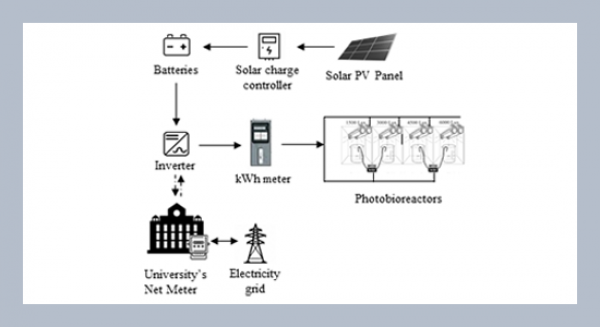R. Abu-Zitara and A. M. Al-Fahed Nuseiratb* a Faculty of Information Technology, Philadelphia University Amman, Jordan
b Faculty of Engineering, Al-Isra Private University Amman, Jordan
Download Citation:
|
Download PDF
This paper presents an Evolutionary Programming based (EP) solution for the nonlinear frictional gripper problem for both the isotropic and orthotropic cases. The presented method is compared with other methods that involve piecewise linearization of the friction law, and methods that are based on the solution of Nonlinear Complementarity Problem (NCP). The EP method could generate more optimal solutions than those of other methods. Numerical examples that illustrate the proposed method are presented.ABSTRACT
Keywords:
robot gripper; nonlinear complementarity problem (NCP); evolutionary programming (EP).
Share this article with your colleagues
[1] Bicchi, A. 2000. Hands for Dexterous Manipulation and Robust Grasping: A Difficult Road Toward Simplicity. IEEE Trans., on Robotics and Automation, 16, 6: 652-662.REFERENCES
[2] Han, L., J. C. Trinkle, and Z. X. Li. 2000. Grasp Analysis as Linear Matrix Inequality Problems. IEEE Trans., on Robotics and Automation, 16, 6: 663-674.
[3] Al-Fahed Nuseirat, A. M. and G. E. Stavroulakis. 2000. A Complementarity Problem Formulation of the Frictional Grasping Problem. Computer Methods in Applied Mechanics and Engineering, 190: 941-952.
[4] Bicchi, A. 1995. On the Closure Properties of Robotic Grasping. International Journal of Robotics Research, 14, 4: 319-334.
[5] Al-Fahed, A. M., G. E. Stavroulakis, and P. D. Panagiotopoulos. 1992. A Linear Complementarity Approach to the Frictionless Gripper Problem. International Journal of Robotics Research, 11, 2: 112-122.
[6] Abu-Zitar, R. and A. M. Al-Fahed Nuseirat. 2000. A Neural Network Approach to the Frictionless Gripper Problem. Journal of Intelligent Robot Systems, 29: 27 - 45.
[7] Fogel, D. B. 1991. “System Identification through Simulated Evolution: A Machine Learning Approach to Modelling”. (MA: Ginn Press. Needham).
[8] Panagiotopoulos, P. D. 1985. Inequality Pro- blem in Mechanics and Applications. Convex and Nonconvex Energy Functions, (Birkhäuser, Boston--Basel).
[9] Oden, J. T. and J. A. C. Martins. 1985. Models and Computational Methods for Dynamics Friction Phenomena. Computer Methods in Applied Mechanics, 50: 67-76.
[10] Kwak, B. M. and S. S. Lee. 1991. A Complementary Problem Formulation of Three Dimensional Frictional Contact. ASME Journal of Applied Mechanics, 58, 137: 134-140.
[11] Al-Fahed, A. M. and P. D. Panagiotopoulos. 1992. Fictional Multifingered Robot Gripper: New Type of Implementation. Computer and Structures, 45, 4: 555-562.
[12] Liu, Y. -H. 1999. ualitative Test and Force Optimization of 3-D Frictional Form-Closure Grasps Using Linear Programming. IEEE Transactions on Robotics and Automation, 15, 1: 163-173.
[13] Markenscoff, X. L. Ni, and Ch. H. Papadimitriou. 1990. The Geometry of Form Closure. International Journal of Robotics Research, 9, 1: 61-74.
[14] Salisbury, J. K. and B. Roth. 1983. Kinematic and Force Analysis of Articulated Mechanical Hands. Journal of Mechanisms Transmission and Automa-tion in Design, 105: 35-41.
[15] Ponce, J. and B. Faverjon. 1995. On Computing Three-Finger Force-Closure of Polygonal Objects. IEEE Transactions on Robot Automat, 11, 6: 868 - 881.
[16] Abu-Zitar, R. and A. M. Al-Fahed Nuseirat. 2001. A Theoretical Approach of an Intelligent Robot Gripper to Grasp Polygon Shaped Objects. Journal of Intelligent Robot Systems, 31: 397 - 422.
[17] Nguyen, V -D. 1989. Constricting Stable Grasps. IEEE Robotics and Automation Conference, III: 1368-1373.
[18] Cutkosky, M. R. 1989. Computing and Controlling the Compliance of a Robotic Hand, IEEE Transactions on Robotics and Automation, 5, 2: 151-165.
[19] Al-Fahed Nuseirat, A. M. and R. Abu-Zitar, 2001. Neural Network Approach to Firm Grip in the Presence of Small Slips, Journal of Intelligent Robot Systems, 18, 6: 305-315.
[20] Michalowski, R. and Z. Mróz. 1978. Associated and non--associated sliding rules in contact problems, Archives of Mechanics, 30, 3: 259-276.
[21] Ferris, M. C. M. Mensier, and J. J. More. 1997. “NEOS and CONDOR: Solving Optimization Problems over the Internet”, Mathematical Technical Report, 06 - 08, Department of Computer Science, University of Wisconsin
[22] Luenberger, D. G. 1984. Linear and Nonlinear Programming Reading, MA: Addison-Wesley.
[23] Murty, K. 1988. Linear Complementarity: Linear and Nonlinear Programming, Heldermann Verlag, Berli.
ARTICLE INFORMATION
Accepted:
2004-11-11
Available Online:
2004-12-02
Abu-Zitar, R., Nuseirat, Al-Fahed, A.M. 2004. An evolutionary based method for solving the nonlinear gripper problem, International Journal of Applied Science and Engineering, 2, https://doi.org/10.6703/IJASE.2004.2(3).221
Cite this article:
R. Abu-Zitar and A. M. Al-Fahed Nuseirat















